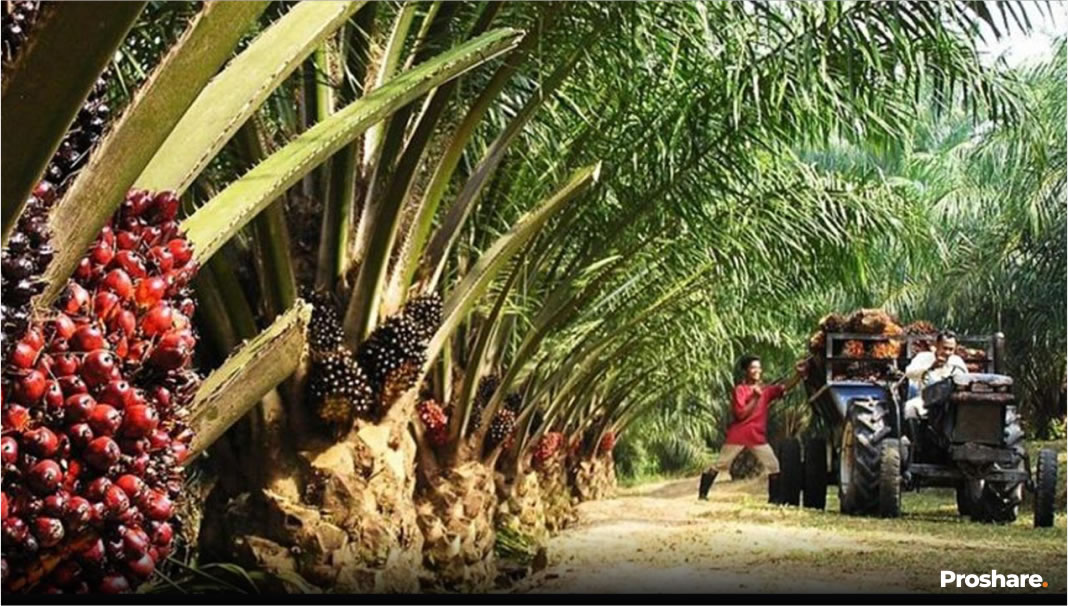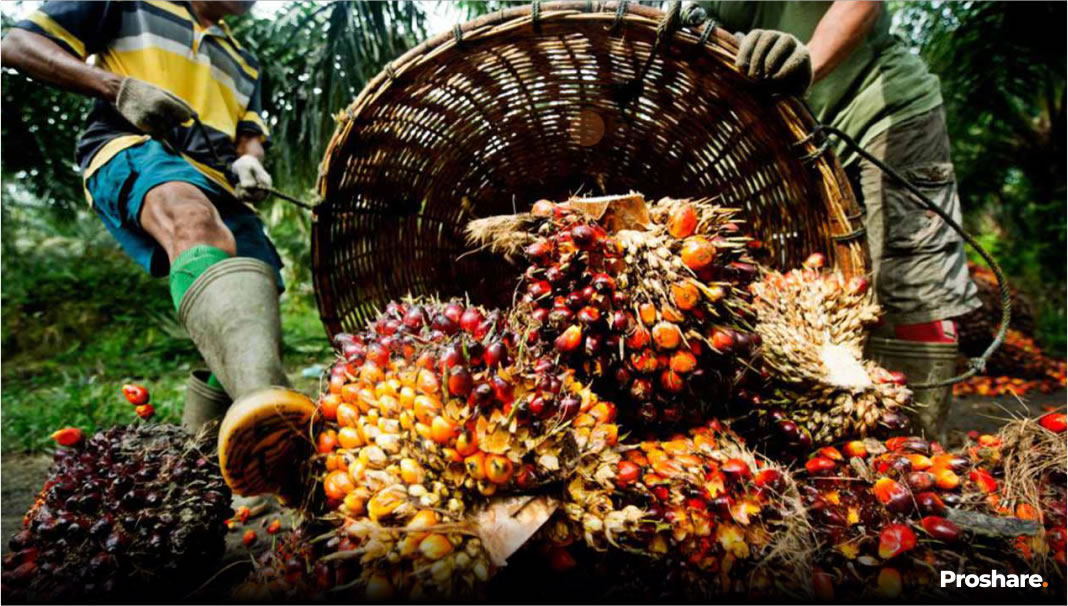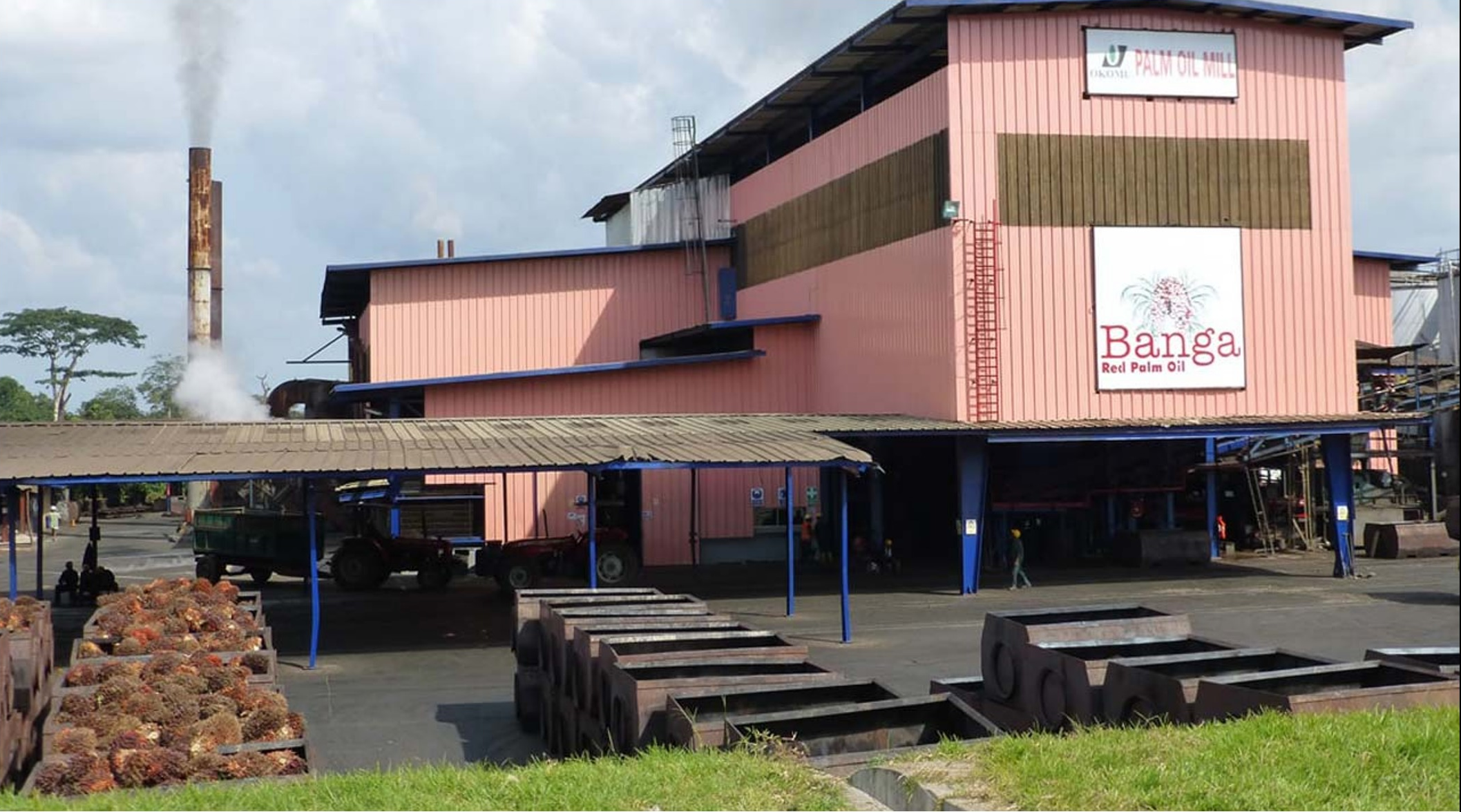Executive Summary
Globally, oil palm is the most consumed edible oil – accounting for 41.2% of the global edible oil consumption in 2021 according to estimates by United States Department of Agriculture (USDA). Interestingly, the crop has an economic lifespan of about 25 to 30 years, bearing its fruit round the year given favourable climate. A palm tree produces roughly 3.8MT/ha (Metric Tonne per Hectare) annually on a global average, 6.0MT/ha in the best plantations in Southeast Asia and 10.0MT/ha in genetic field trials. Due to its climatic requirement for cultivation, a whopping 91.8% of global production comes from Malaysia, Indonesia, Nigeria, Columbia, and Thailand (MINCT) – three of which are Southeast Asian countries.

Global oil palm production recovered in 2021 from a 2-year low, increasing by 3.7% y/y to 75.5MMT compared to the previous year. Meanwhile, global consumption of oil palm grew at a slower pace than production, up 1.1% y/y to 74.3MMT in 2021 – sustaining growth for 24 consecutive years. We attribute the mild consumption growth to the gradual reopening of economic activities, especially through the resumption of production by consumer goods manufacturers – the largest user of oil palm.
In terms of contribution, Nigeria, which controlled an average of 30.9% of the global oil palm production in the late 1960s, controlled only 1.9% in 2021 (up from 1.7% in 2020) even though its production grew 9.8% y/y to reach 1.4MMT in 2021. The declining share of Nigeria in the global market owes to poor mechanisation, prevalence of small farm-holders (70.0% of the market), low yield due to inadequate improved oilseeds, and insecurity challenges in farming areas.
Also, domestic oil palm production continues to lag consumption due to steady population growth and weak output capacity. In 2021, the consumption of oil palm grew 6.0% y/y to 1.8MMT – outpacing the 4.3% y/y growth in the prior period. This represents a 400,000 MT production shortfall. With a population estimate of 211.4 million people, Nigeria consumes 2.6MMT of fats and oils annually with palm oil accounting for 67.3% of total consumption.
The uptick in the local CPO (Crude Palm Oil) prices was extended to 2021 as industrial demand for CPO improved following the economic activities reopening post-lockdown. Specifically, we estimate that average local CPO prices rose 35.0% y/y to $1,276.09 in 2021 – the fastest growth in 4 years. This price growth translated to solid top-line expansion for listed oil palm companies - Okomu Oil Palm Plc and Presco Plc.

However, the sector faces risk factors which could dent its growth potentials. Low yield of smallholders’ farmers (who contribute over 70.0% of the industry production) due to the use of obsolete technology, little or no access to finance & enhanced oilseeds, rising costs, and frequent FX shock (due to large importation of fertilizer) pose downside risks to the sector’s growth. Also, persistent insecurity and communal disputes have aggravated the constraints.
Nevertheless, we are optimistic that output from the Dangote fertilizer plant (capacity: 3.0MMT/year) would mitigate supply risk and reduce FX exposure in the medium to long term. Also, to bridge the production shortfall, the listed companies are focused on expanding their capacity by investing in planting areas, expanding mills and refineries. This production boost coupled with expected population growth would continue to support the top and bottom-line of the companies in the near to medium term. Overall, we believe that there are values still lurking in the industry, which supports our optimistic view for a near and long-term growth of the listed companies – Okomu Oil Palm plc and Presco plc.
Download PDF Report Here
 Lagos, NG • GMT +1
Lagos, NG • GMT +1











 578 views
578 views












 Sponsored Ad
Sponsored Ad
 Advertise with Us
Advertise with Us









